Unveiling the Dark Beauty of Europe’s Most Haunting Gothic Structures
Discover the spine-chilling allure of Europe’s most fear-inducing Gothic architecture. From the eerie towers of Dracula’s Bran Castle to the haunted halls of Hunyad Castle, these magnificent structures are steeped in dark legends and historical intrigue. Our journey through the top twelve Gothic masterpieces will take you to iconic cathedrals like Notre-Dame de Paris and the towering spires of Milan Cathedral, each with their own tales of mystery and ghostly encounters. Dive into the captivating world of Gothic castles, churches, and palaces that not only showcase stunning architectural brilliance but also evoke a sense of awe and trepidation. Whether you’re a history enthusiast, architecture lover, or a seeker of ghost stories, these Gothic marvels offer an unforgettable exploration into Europe’s haunted past.
Top Fifteen Gothic Places with the Most Fear-Inducing Architecture
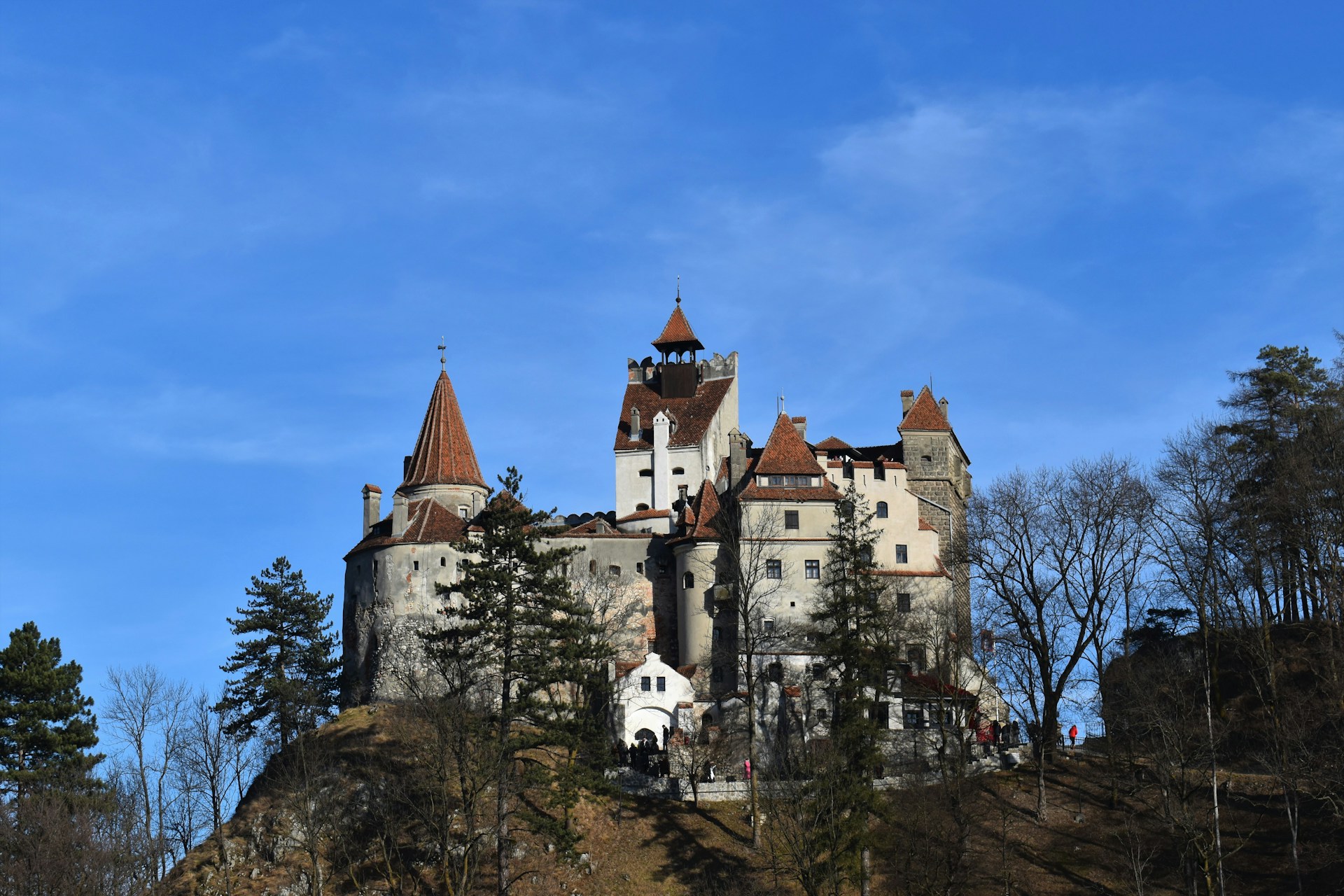
Bran Castle, Romania
- Description: Often associated with Dracula, Bran Castle’s Gothic towers, narrow stairways, and dark, atmospheric interiors create an eerie allure that evokes fear and fascination.
- Myths and Legends: Bran Castle is famously linked to the Dracula legend, thanks to Bram Stoker’s novel. Vlad the Impaler, who inspired the Dracula character, is rumored to have been held prisoner here, though historical evidence is lacking. The castle’s dark, brooding presence and isolated location enhance its association with vampire lore.
- Facts: Built in the 14th century, Bran Castle served as a fortress against the Ottoman Empire and later became a royal residence. It is now a museum and a popular tourist attraction.
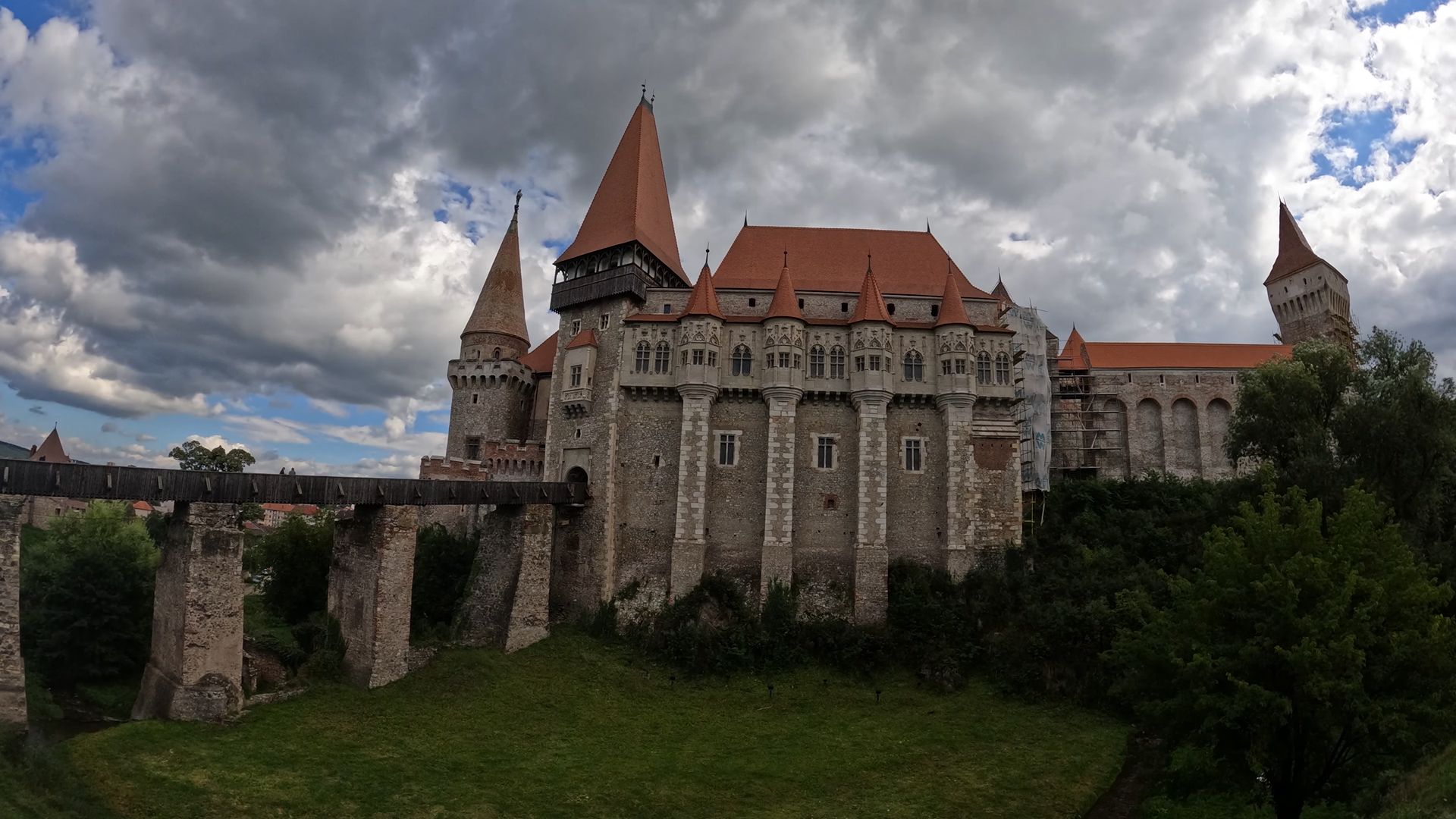
Hunyad Castle (Corvin Castle), Romania
- Description: Known for its dark history and Gothic-Renaissance style, Hunyad Castle’s imposing structure, gloomy dungeons, and legends of Vlad the Impaler create an ominous atmosphere.
- Myths and Legends: The castle is associated with Vlad the Impaler, who was allegedly imprisoned here for seven years. Stories of torture and Vlad’s cruel methods add to the castle’s fearsome reputation.
- Facts: Built in the 15th century, Hunyad Castle was a significant military fortress and later a residence for Hungarian royalty. It is considered one of the most beautiful Gothic castles in Europe.
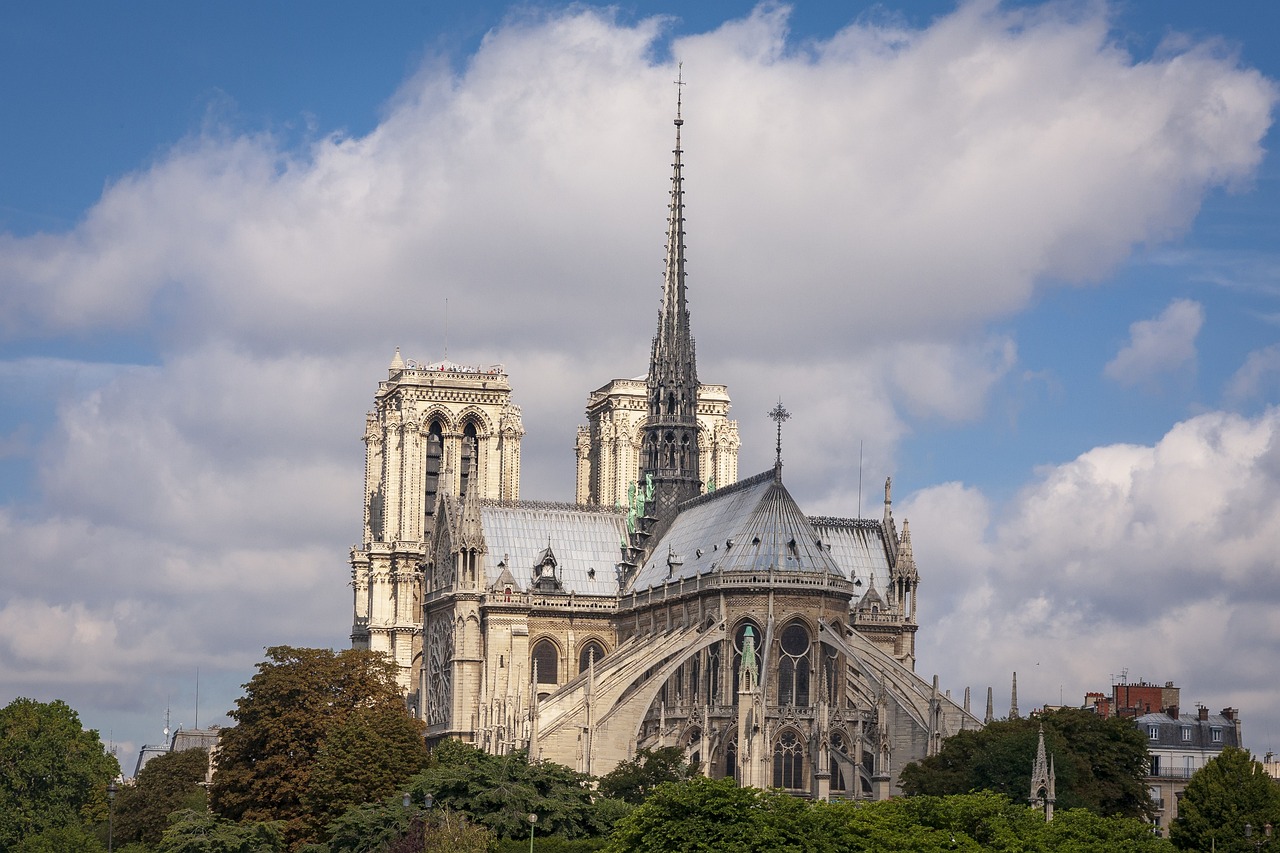
Notre-Dame de Paris, France
- Description: With its towering spires, flying buttresses, and gargoyles, Notre-Dame is a quintessential Gothic cathedral.
- Myths and Legends: The cathedral is home to many legends, including the tale of the Hunchback of Notre-Dame, popularized by Victor Hugo’s novel. The gargoyles are said to come alive at night to protect the cathedral from evil spirits.
- Facts: Construction began in 1163 and was completed in 1345. Notre-Dame has been the site of many historical events, including the coronation of Napoleon Bonaparte.
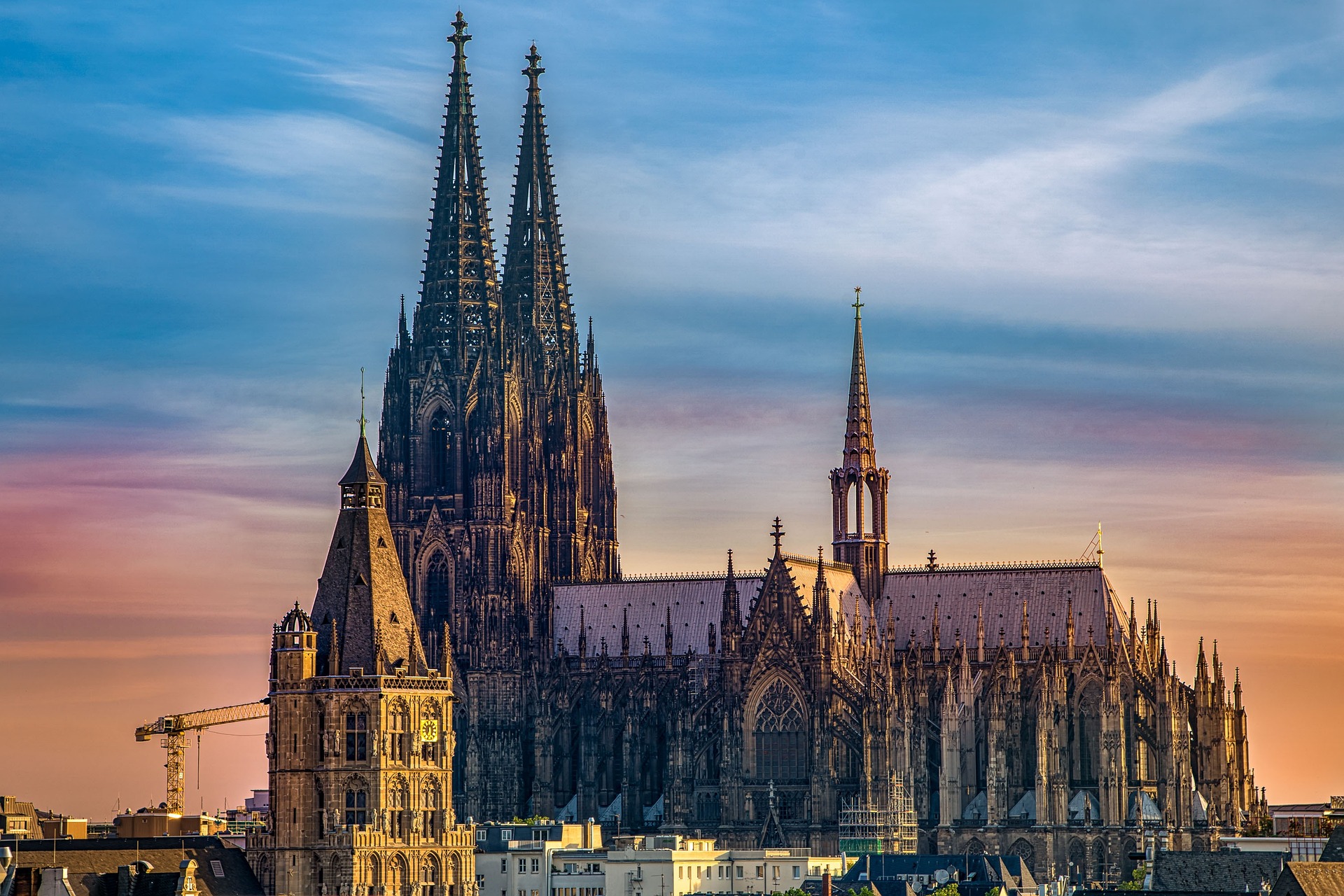
Cologne Cathedral, Germany
- Description: Known for its immense twin spires and dark, Gothic architecture, Cologne Cathedral dominates the skyline with its massive, shadowy presence.
- Myths and Legends: Legend has it that the cathedral was built with the help of the devil, who agreed to assist in exchange for the soul of the first being to enter the cathedral. To outsmart the devil, the builders let a wolf enter first.
- Facts: Construction began in 1248 and was completed in 1880. It is the tallest twin-spired church in the world and houses the Shrine of the Three Kings, believed to contain the relics of the Magi.
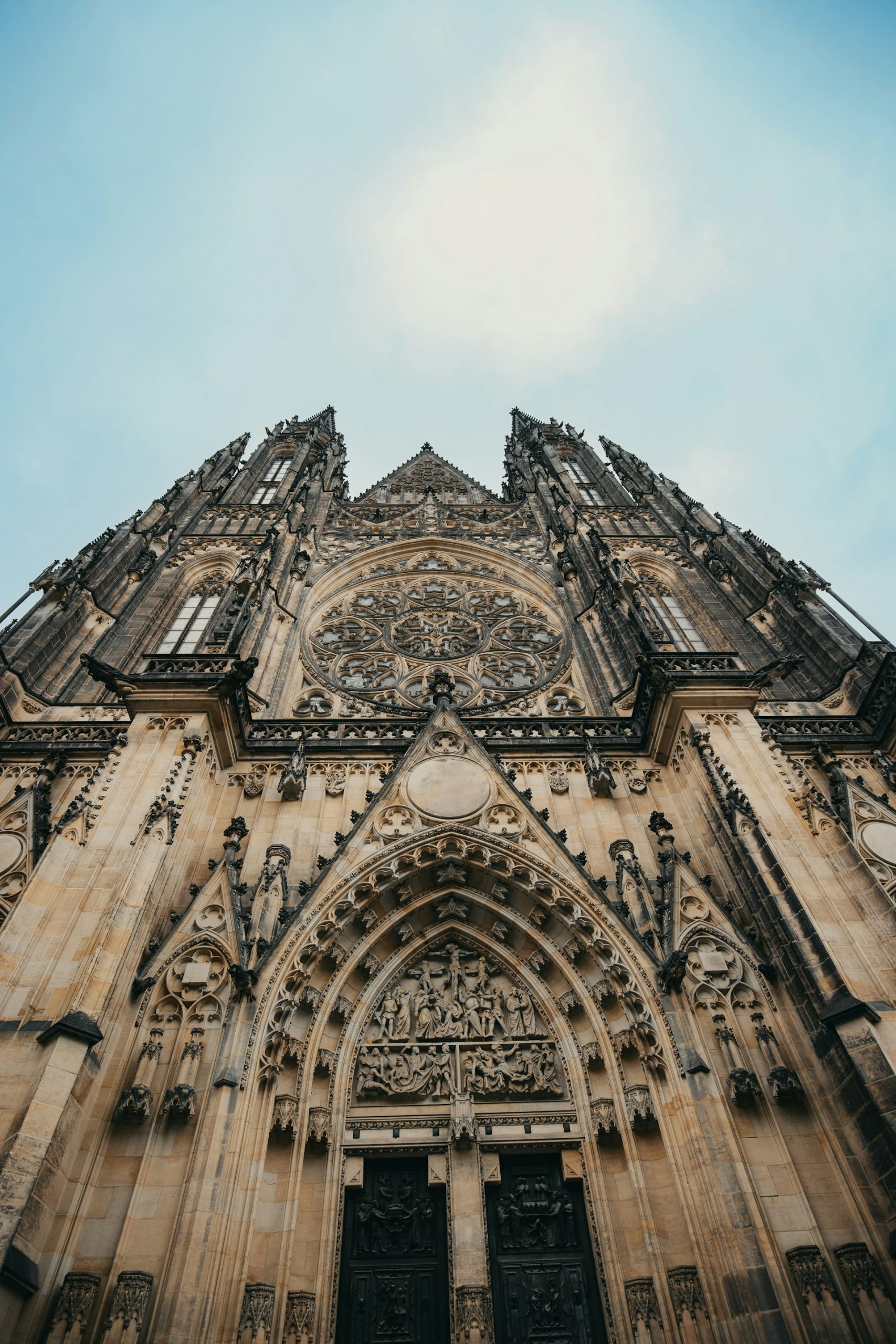
Prague Castle, Czech Republic
- Description: The largest ancient castle in the world, featuring significant Gothic elements, particularly in St. Vitus Cathedral.
- Myths and Legends: Prague Castle is surrounded by legends, including tales of hidden treasure and the ghost of a headless Templar knight who roams the grounds. The Dalibor Tower is named after a knight who was imprisoned there and played his violin from the tower, symbolizing hope and resilience.
- Facts: The castle complex dates back to the 9th century and has been the seat of Czech kings, emperors, and presidents.

Canterbury Cathedral, England
- Description: A mix of Gothic and Romanesque styles, Canterbury Cathedral has been a site of Christian pilgrimage for centuries.
- Myths and Legends: The cathedral is associated with the martyrdom of Thomas Becket, who was murdered in 1170. Pilgrims visit the site of his death, and it is said that miracles have occurred at his shrine.
- Facts: Construction began in 1070 and was completed in 1077. The cathedral is the mother church of the Anglican Communion and the seat of the Archbishop of Canterbury.

Doges’ Palace, Italy
- Description: A stunning blend of Gothic and Renaissance architecture in Venice, the Doges’ Palace served as the residence of the Doge and the seat of Venetian government.
- Myths and Legends: The palace is known for its dark dungeons, called the Piombi, where prisoners were held, including Giacomo Casanova, who famously escaped. There are tales of ghostly figures and unexplained sounds in the palace’s dark corners.
- Facts: Built in the 14th century, the Doges’ Palace is now a museum and a major tourist attraction in Venice.
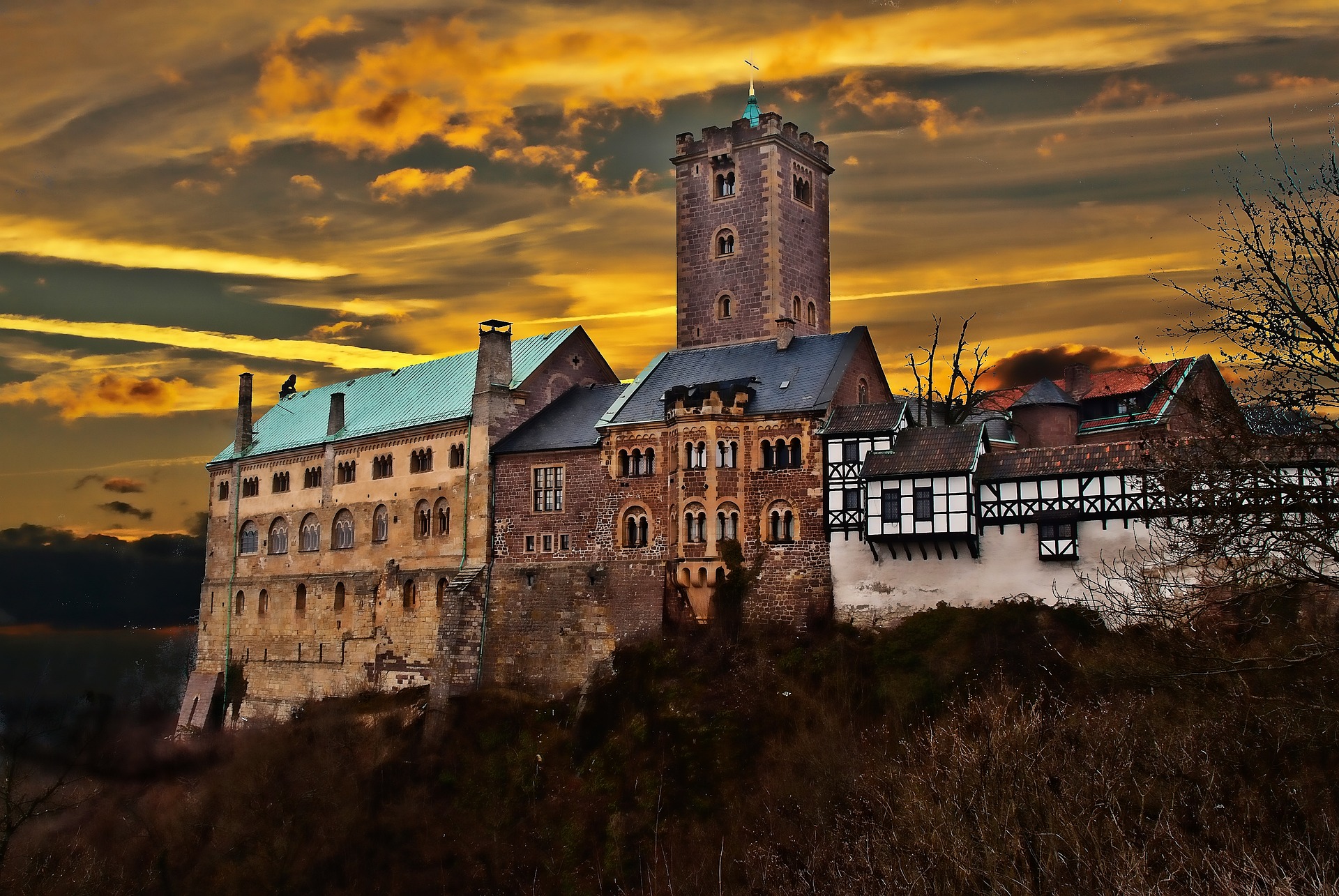
Wartburg Castle, Germany
- Description: A UNESCO World Heritage site with a mix of Romanesque and Gothic architecture, known for its historical significance and the legend of Saint Elisabeth.
- Myths and Legends: Wartburg Castle is tied to the legend of Saint Elisabeth of Hungary. One famous story tells of her secretly taking bread to the poor, despite her husband’s disapproval. When confronted, the bread miraculously transformed into roses, symbolizing her saintly virtue and divine favor.
- Facts: Built in the 11th century, Wartburg Castle was the site where Martin Luther translated the New Testament into German while in hiding.
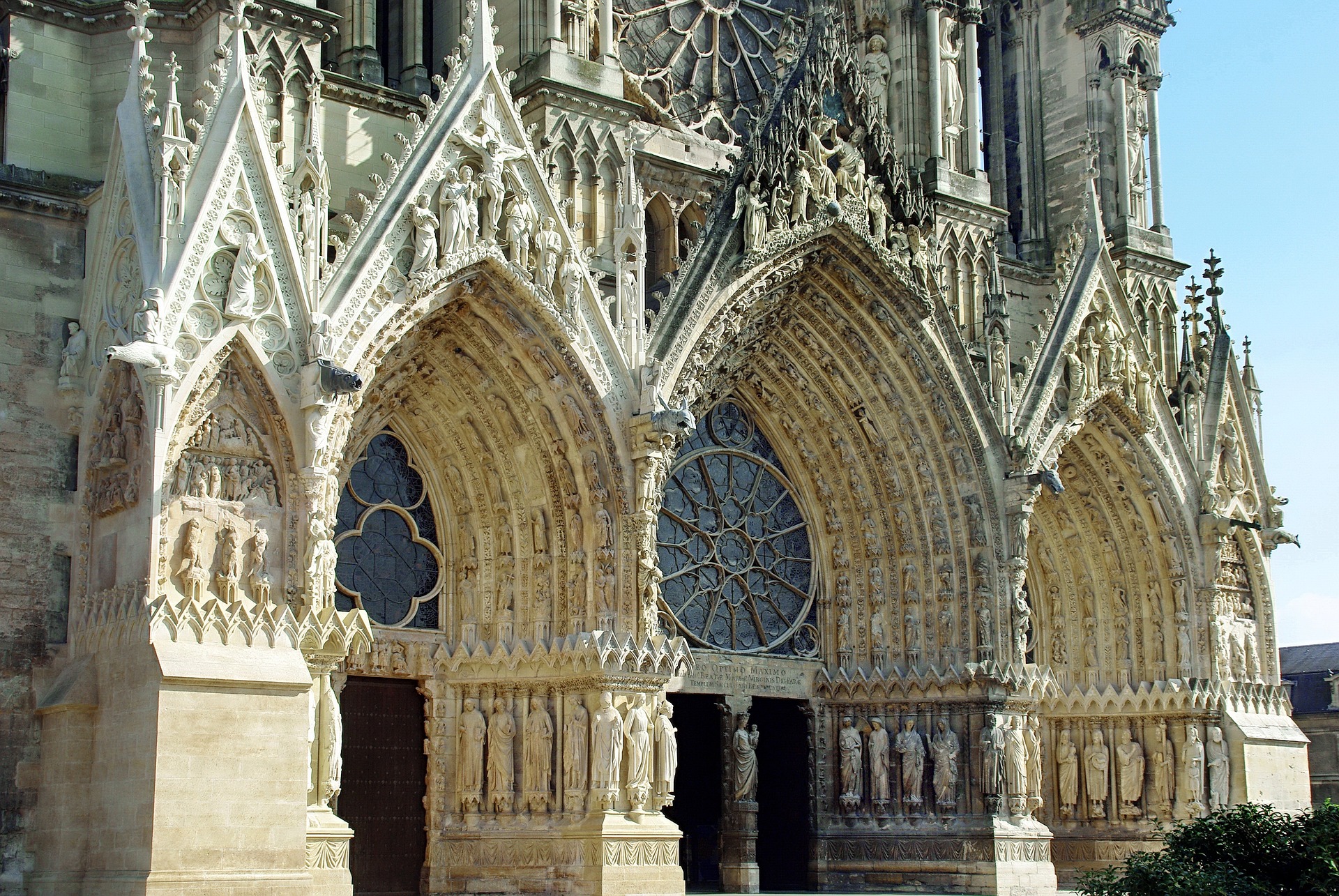
Reims Cathedral, France
- Description: Famous for its beautiful sculptures and stained glass windows, where the kings of France were crowned.
- Myths and Legends: Reims Cathedral is said to be haunted by the ghost of Clovis I, the first king of the Franks, who was baptized here. The detailed Gothic sculptures, including depictions of the Last Judgment, and the dark, towering structure evoke a sense of reverence and fear.
- Facts: Construction began in 1211 and was completed in 1275. The cathedral is a UNESCO World Heritage site and a masterpiece of Gothic architecture.
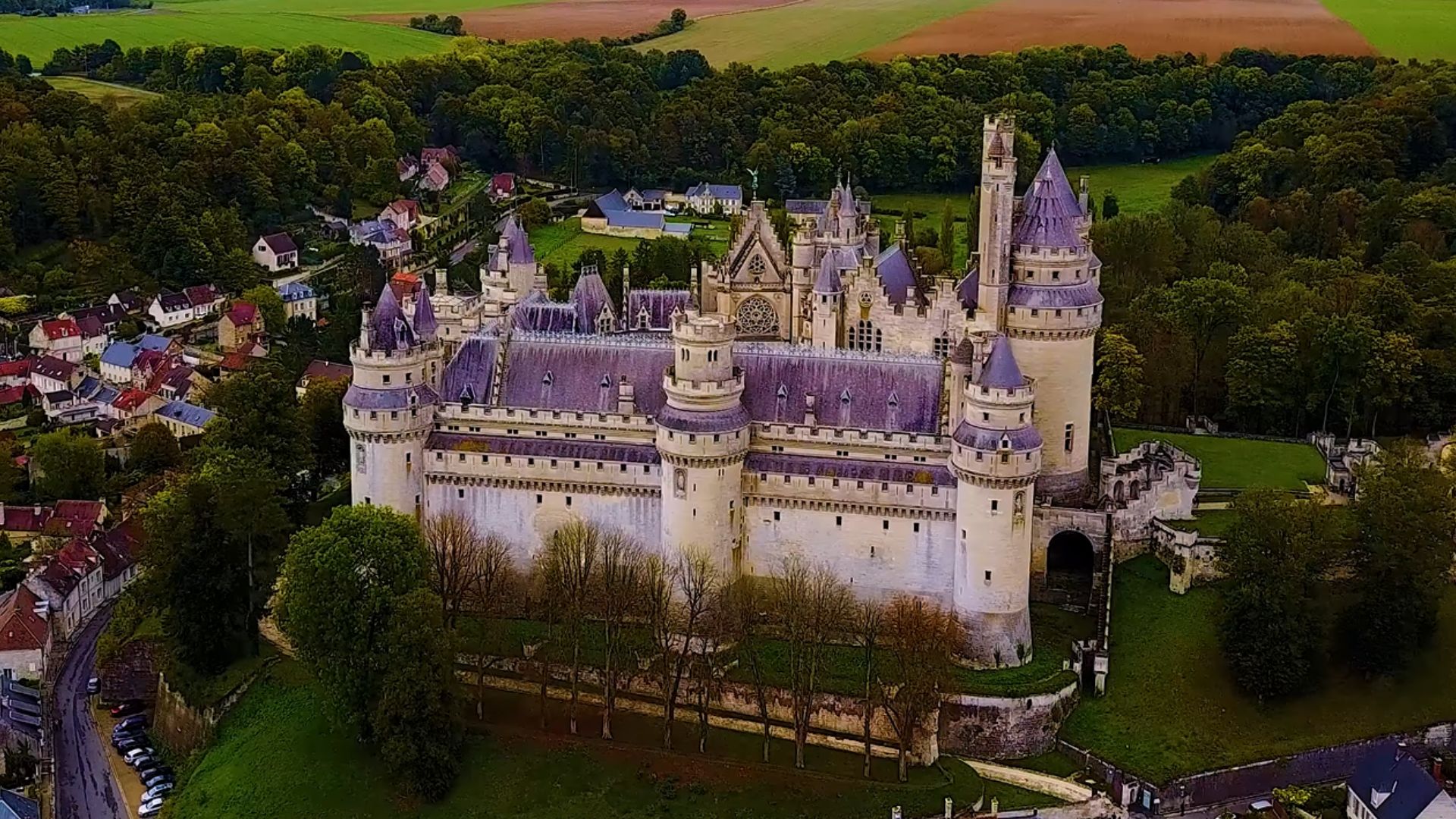
Château de Pierrefonds, France
- Description: Originally a medieval fortress, it was rebuilt in the 19th century with a strong Gothic revival style.
- Myths and Legends: Château de Pierrefonds is said to be haunted by multiple ghosts, including a white lady who roams the halls at night, mourning her lost love. There are also tales of phantom sounds, like ghostly footsteps and unexplained whispers, adding to the castle’s spooky reputation.
- Facts: The castle was originally built in the 12th century and reconstructed by architect Viollet-le-Duc in the 19th century. It is now a popular tourist attraction and filming location.
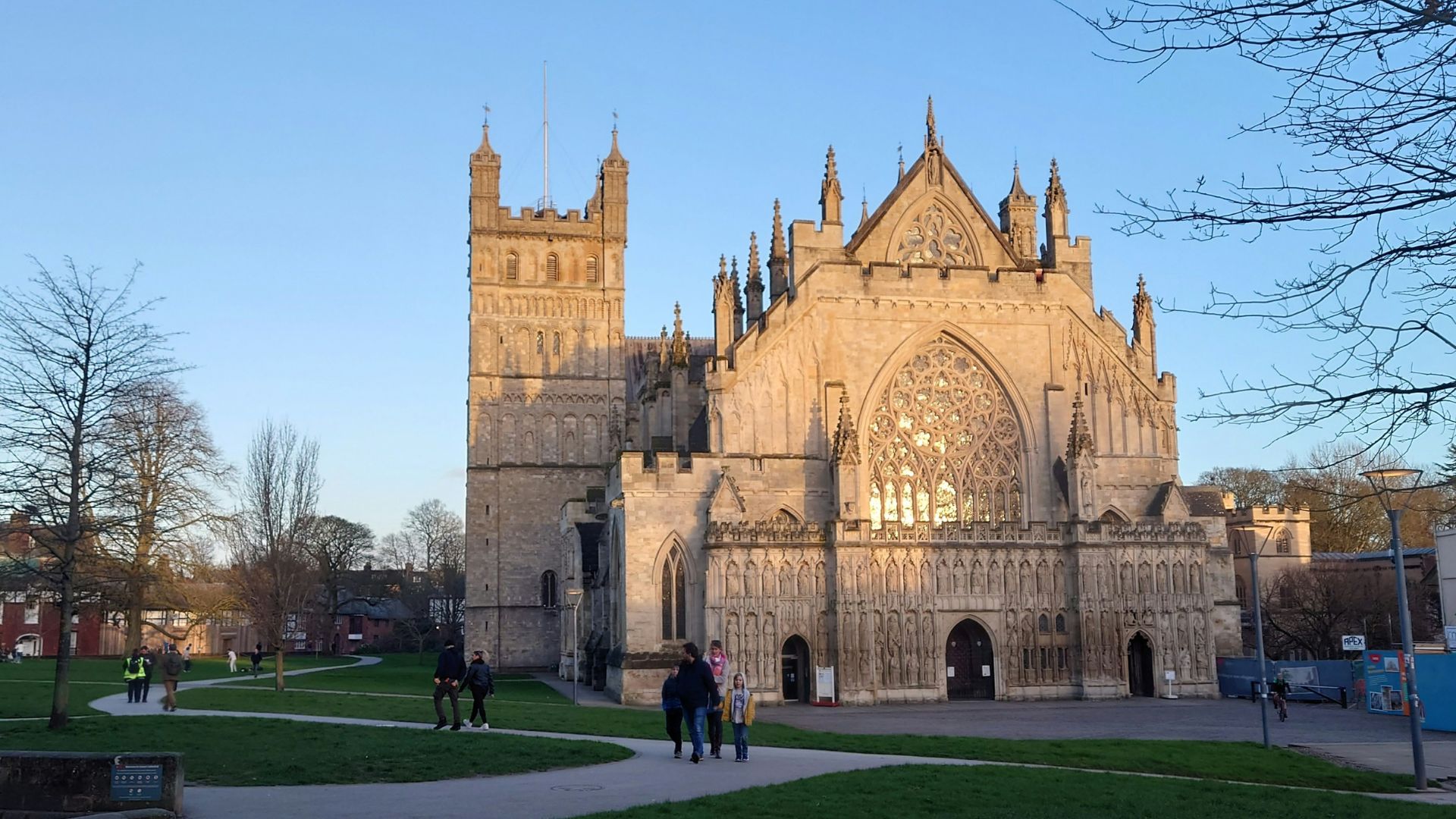
Exeter Cathedral, England
- Description: Known for its long uninterrupted stretch of Gothic vaulting, Exeter Cathedral is a masterpiece of Gothic architecture with its intricate stonework and detailed sculptures.
- Myths and Legends: The cathedral is associated with the legend of the “Exeter Vampire,” a story about a vampire that was supposedly exorcised from the cathedral in the 19th century. The cathedral’s dark, medieval interiors and elaborate tombs create a haunting atmosphere.
- Facts: Construction began in 1112 and was completed in 1400. The cathedral has the longest uninterrupted Gothic vaulting in the world.
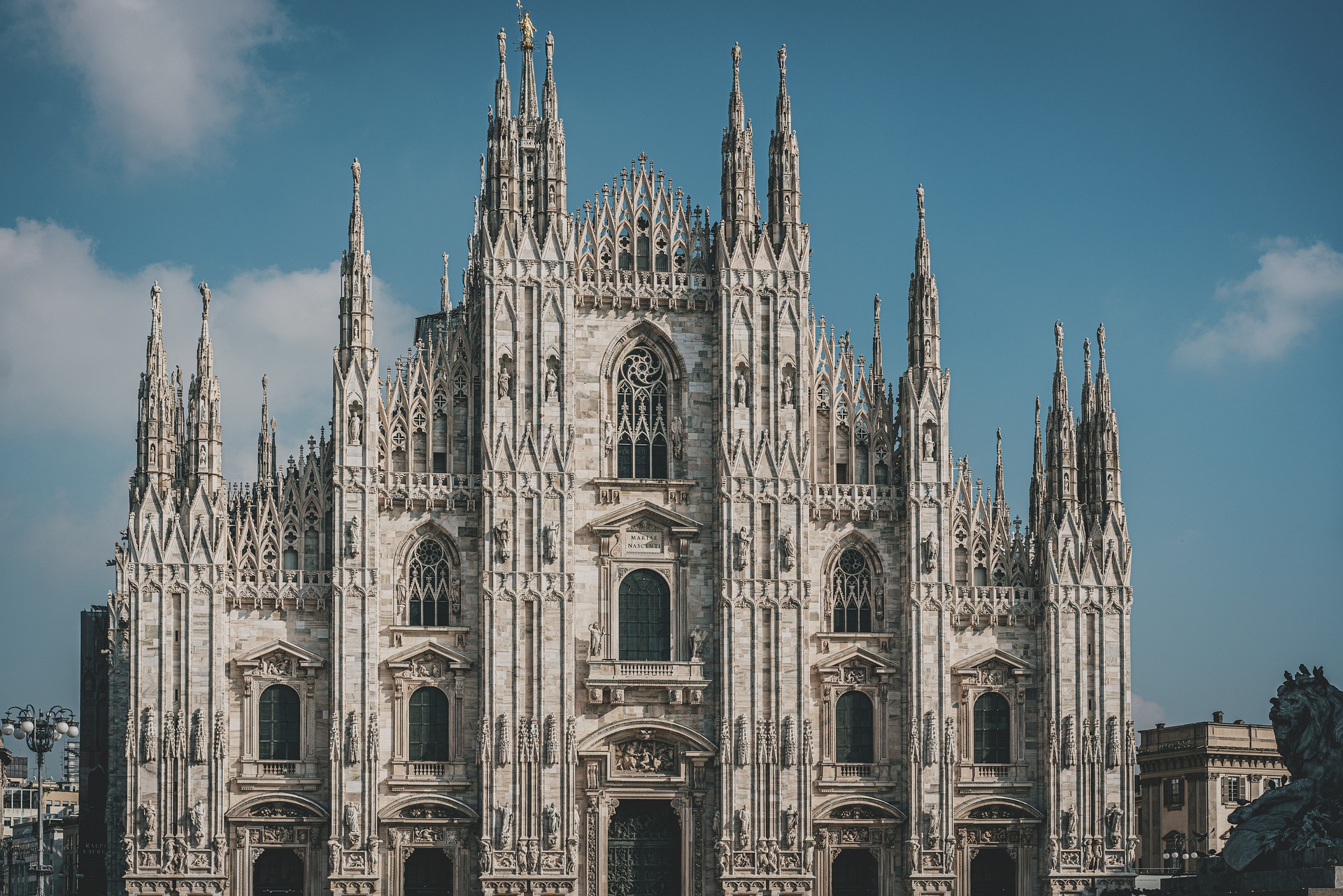
Milan Cathedral (Duomo di Milano), Italy
- Description: One of the largest Gothic cathedrals in the world, the Duomo is famous for its elaborate façade, spires, and statues.
- Myths and Legends: The cathedral’s roof, with its numerous statues and gargoyles, is said to be haunted by the spirits of the sculptors who created them. The dark spires and the thousands of statues give the Duomo a formidable and awe-inspiring presence.
- Facts: Construction began in 1386 and was completed in 1965. The cathedral is the largest church in Italy and the second-largest in Europe.

Rouen Cathedral, France
- Description: An exquisite example of French Gothic architecture, Rouen Cathedral is famous for its three different towers and its association with Joan of Arc.
- Myths and Legends: The cathedral is said to be haunted by the ghost of Joan of Arc, who was tried and executed in Rouen. Visitors have reported seeing her apparition in the cathedral’s dark corners. The cathedral is also known for its eerie nighttime illuminations.
- Facts: Construction began in 1030 and continued into the 16th century. Claude Monet famously painted a series of works depicting the cathedral’s façade.

Westminster Abbey, England
- Description: A stunning Gothic church in London, Westminster Abbey is the traditional place of coronation and burial for English and later British monarchs.
- Myths and Legends: Westminster Abbey is reputed to be haunted by several ghosts, including a monk who has been seen gliding along the cloisters and the spirit of John Bradshaw, the judge who condemned Charles I to death, seen in the Chapter House. The abbey’s ancient tombs and dark corners add to its spooky reputation.
- Facts: Construction began in 1245 and was largely completed by 1517, although additions have been made since. It is a UNESCO World Heritage site and a major historical and tourist attraction in London.
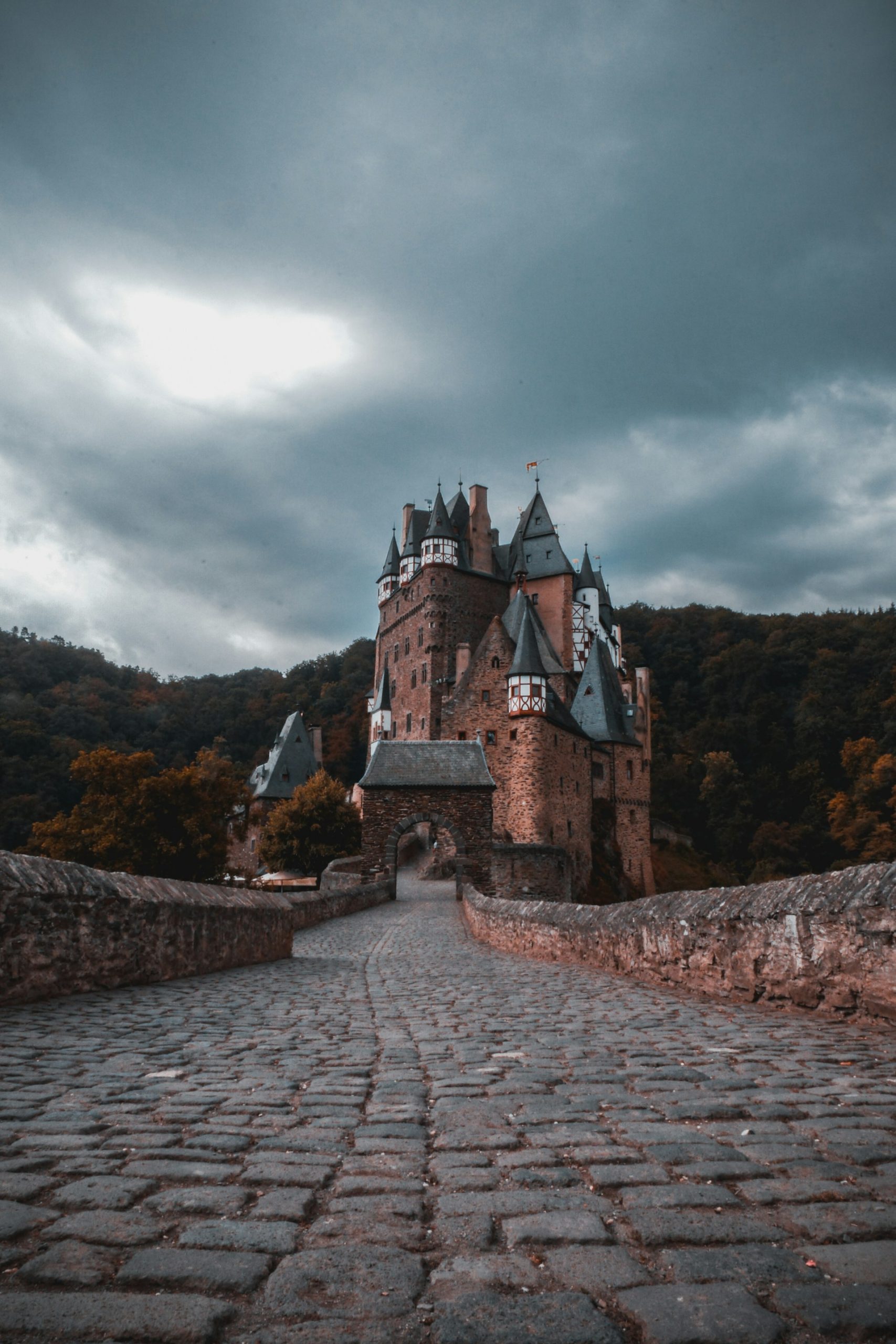
Eltz Castle (Burg Eltz), Germany
- Description: Nestled in the hills above the Moselle River, Eltz Castle combines Gothic and Romanesque styles. Its well-preserved medieval architecture, Gothic arches, and enchanting surroundings make it one of the most picturesque castles in Europe.
- Myths and Legends: The castle is said to be haunted by the ghost of Agnes, a young woman who died defending the castle. Agnes, a brave knight’s daughter, reportedly fought off invaders but was killed in the process. Her spirit is believed to still protect Eltz Castle, wandering its halls in armor.
- Facts: Built in the 12th century, Eltz Castle has remained in the possession of the same family for over 850 years. It is one of the few castles in Europe that has never been destroyed.
Conclusion
These Gothic structures are not only architectural masterpieces but also evoke a sense of fear and awe through their dark histories, legends, and imposing designs. From the chilling dungeons of Hunyad Castle to the towering spires of Notre-Dame, each of these sites offers a unique glimpse into the haunting beauty of Gothic architecture. Their intricate stonework, vast interiors, and eerie atmospheres make them some of the most captivating and fear-inducing Gothic places in Europe. Whether you’re a history buff, architecture enthusiast, or lover of ghost stories, these Gothic masterpieces provide an unforgettable journey into the past, filled with mystery and intrigue. As you explore these remarkable sites, let yourself be transported back in time and immerse yourself in the captivating legends that continue to breathe life into these ancient walls.








1 thought on “The Gothic Architecture of Europe”